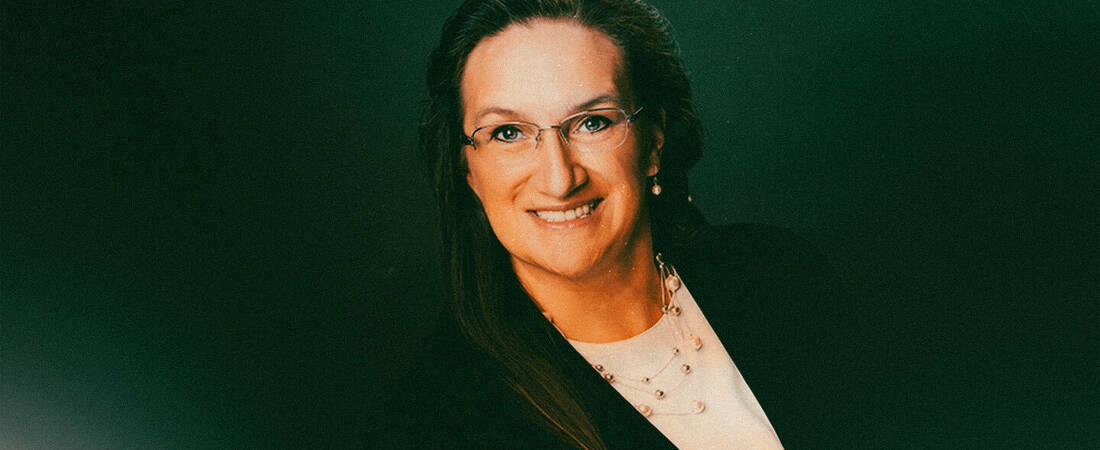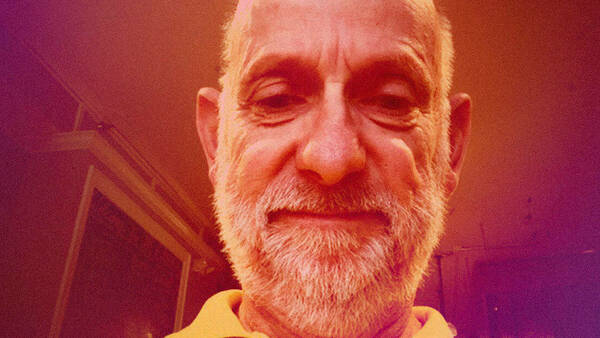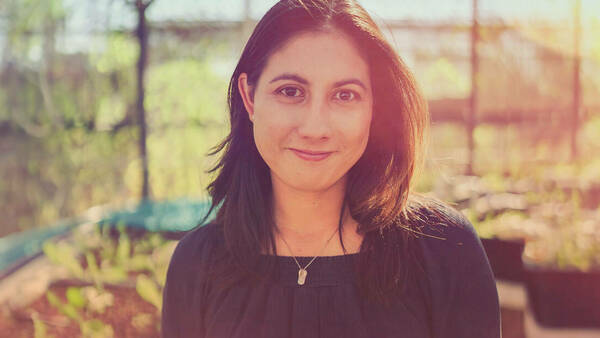When Monica Macek ’95 left her home on the Pine Ridge Indian Reservation in South Dakota to attend Notre Dame, she didn’t think she’d be going back.
“When you're in high school and they have the graduation speeches, they tell you to go get your education and then come back and bring your knowledge with you to help your reservation, help make this a better place,” Macek says. “When you're in high school, it's like, yeah, yeah, whatever. Once I'm out of here, I'm gone. That's what I thought.”
Macek quickly found that Notre Dame was quite different from Red Cloud, the small nonprofit Jesuit high school she had attended.
“In my senior class, there were 45 of us. Then I get to Notre Dame and my first calculus class was in an auditorium of 350 people with the professor up on the stage, and I'm like, whoa, this is different. My world was fairly small here in South Dakota. It was the first time I had met people from different countries such as India, China,” Macek says.
The inverse was also true with many people never having met Native Americans.
“They still asked questions like, do you live in teepees?” Macek recalls. “What it opens up for me is the idea that it doesn't really matter. I'm not being held back by any of their views, because they don't know anything about me.”
Macek found her community at Notre Dame by joining clubs, including the Notre Dame Club of South Dakota; the Native American Club, where she met Native Americans from all over the U.S.; and even the Hispanic Club.
“One of my really close friends was Hispanic, and he was starting a Hispanic club. So I joined, even though I'm not Hispanic, just so he had a member. Meeting all these different people opened my eyes to all the differences and possibilities that are out there.”
Once Macek graduated, she took a job in Omaha, Nebraska, but she didn’t quite feel at home there.
“It was still too much city for me, and it took me about two years to realize that. I'm used to wide open spaces here in South Dakota. I didn't think there were any engineering jobs on the reservation, so I didn't even look, but an engineering position sort of fell in my lap. That’s what brought me back to the reservation,” Macek says.
The job was in the operation and maintenance department at Oglala Sioux Rural Water Supply System. Macek worked there for four years before she heard about an opening to be Facilities Manager at the Indian Health Service. The position had been vacant for over a year with no applicants, a situation, which Macek says is not uncommon for jobs on the Pine Ridge Reservation.
“If you're not from here, it's not a place most people want to be. There's no housing really. There are a total of two stoplights on the entire reservation. The largest town is Pine Ridge, which has the grocery store, two gas stations, a post office. But there isn't a place to do, say, furniture shopping. You have to travel to do any of that. And the majority of the reservation is poor, so they don't have transportation. If you don't have reliable transportation, you can't have a steady job. And if you can't work, then you don't have a house and can't pay rent. So on the reservation, there are usually multiple families in one household. And even if you have a job and a car, it’s still difficult because you're helping your family or you're helping your neighbors, giving rides. You have these extra things that you do, not because you have to, but you help your neighbor. That's, what you do.”
Despite the difficulties associated with life on the reservation, Macek took the job, which came with a host of its own challenges.
“In my first year there, my safety officer left, my secretary resigned, my supply technician moved out of state, and I lost my foreman. So I was doing five jobs and learning how to do my job all at the same time. The first three years were brutal.”
Macek persevered, though, and completed a number of critical projects for the Pine Ridge Hospital, including building a nineteen-unit apartment building to house hospital staff and a 126,000 square foot addition to the hospital, which had long since outgrown its original space.
“The population was larger than what the hospital was built for when I started in 2000. So every year that you’re not expanding, it’s getting worse. We have less and less space.”
Before the expansion was completed, the hospital’s outpatient clinic had to house the pediatric clinic, the Ear, Nose, and Throat clinic, and the midwife clinic. Macek was the only engineer on the $8 million project, but seeing the impact it made on the community made the work well worth it.
“Moving the midwife clinic meant getting the healthy babies and moms away from the sick little kids. It's like, hey, I did this, this is a big, beautiful space. There's some light. It’s not crowded. You run into people in the waiting area while you're doing inspections, and they're your friends or your relative, your aunt or your uncle. They're enjoying the new chairs that you bought.”
The community Macek found while working at the IHS would end up being one of her favorite parts of the job.
“My staff and my coworkers made it a lot of fun. A lot of my coworkers were my classmates or my cousins, so it was like being in high school again.”
Macek went on to find another job that was even more like being in high school — working for her alma mater, Red Cloud. She currently serves as the high school’s Vice President of Facilities, working on the very same campus where she attended school.
“My office is in the oldest building on the reservation. It was built in 1888 or 1889 by local natives and Jesuits from local materials. When I was in high school, I never went into the building. It’s this big, very mission-looking building and we were told to stay out of there. Now, my office is in this building, and I can go anywhere I want. I'm doing a renovation project on this building to bring it up to code and refresh it for its new purpose,” Macek shares. “I love these old buildings. You find pictures of them with people when the building was new. It's like, wow, these buildings are still here. I’ve got to take care of them.”
Macek’s role as Vice President of Facilities was totally new — the school had only ever had Maintenance Directors — so her first task when she started two years ago was generating a master plan. Macek and her team recently broke ground on the first project in that plan: a new building for The Heritage Center.
“It's a museum of Native American artwork. It's also a gathering space. We have the design complete. We just started the dirt work, so everybody's excited about that.”
Macek didn’t set out to return to the reservation or even to work in facilities management, but working for and with her community has turned out to be incredibly rewarding.
“Fixing things, building things, making things better makes me happy. But besides the job, it’s the people. I have amazing coworkers. A lot of them are like me. They’re female. They're intelligent. They're funny. They're wearing multiple hats. They're from here, and they’re here to do the best job that they can do to make it a better place.”



